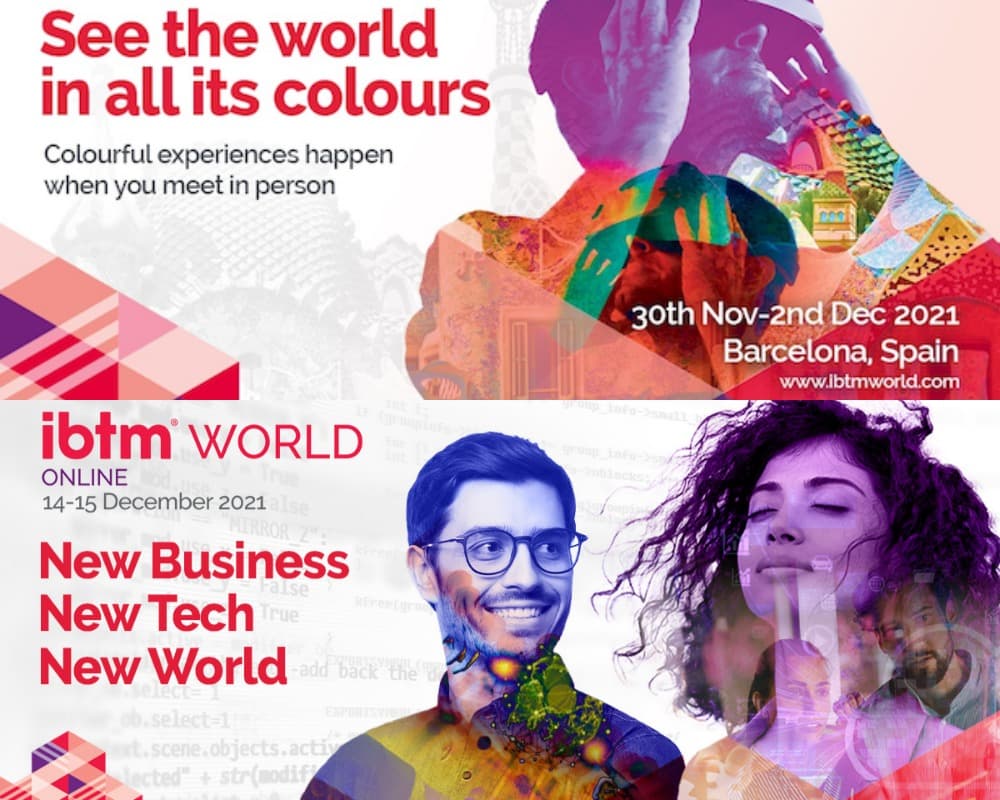Chances are you’ve heard of asynchronous communication or learning before; the type of communication where participants don’t interact in real-time (at the same time). In the case of learning, that means that the teacher delivers content, while the student learns at their own leisure. It seems that the asynchronous communication trend has also started making waves in the meeting and events industry, namely as asynchronous hybrid events.
As discussed in our 2022 Event Trends Guide, hybrid events are not simply in-person and virtual events put together. Instead, event marketers should explore the middle ground between such categories, blurring the lines between the face-to-face and digital world.
The same goes for content delivery. Since the pandemic, many planners have started playing with using pre-recorded sessions rather than live and offering event content on-demand. Synchronous hybrid events can therefore have asynchronous elements – all events do to some extent.
What makes a hybrid event synchronous is that both hybrid audiences experience the same event, at the same time. But this is no easy feat; research shows that 46% of event organizers say that speakers struggle to simultaneously engage a virtual and in-person audience.
Asynchronous hybrid events have emerged as a solution to many hybrid event challenges, such as continuous audience engagement, picking the right venue, and sufficient bandwidth for attendee support. Additionally, they come with an additional set of perks and pose a great opportunity for event planners to start embracing the up-and-coming community model.
What Are Asynchronous Hybrid Events?
An asynchronous hybrid event is a hybrid event where the in-person experience takes place at a different time than the virtual component. Either one can come before the other – as far as content goes, the event stays the same for both audiences.
Why asynchronous events? What are the benefits of hosting the same event on two separate occasions? A great asynchronous hybrid event case study is IBTM 2021. David Thompson, IBTM World Event Director, explained why they chose to go down the asynchronous road.
“The main reason for hosting the in-person and online shows at different times was to give exhibitors and buyers the opportunity to recover after the in-person show, give them time to travel back from Barcelona, organize their notes and business cards exchanged during the in-person show so that they could effectively focus on the online event and make the most of joining.”
Asynchronous hybrid events are defined by the huge pain point they solve for event planners: hybrid audience engagement. There is no need to juggle between the virtual audience on one side and the in-person attendees on the other. Each gets full, undivided attention.

Source: IBTM World
The Perks Of Asynchronous Hybrid Events
Event planners are moving towards the hybrid model because hybrid events have many benefits. When planned asynchronously, those benefits only deepen in their impact. On top of that, they also pave the way toward a more modern, multi-event strategy.
Higher Quality Interactions At The Event
Despite various event technology solutions that make the virtual audience feel like an equal participant at hybrid events, it’s nonetheless hard for the speaker to engage two audiences at the same time. Additionally, it’s harder to have in-depth conversations in a simultaneous hybrid event because it is time-bound.
One of the greatest benefits of asynchronous communication is that participants can take time to digest information and present their answers when they are ready. Such discussions are more complex and foster a deeper sense of belonging.
Event Planners Have Less On Their Plate
Planning two events can sometimes be easier than planning one deeply complex hybrid event. A lot of things can go wrong during a synchronous hybrid event as it is hard to stay in sync online and in the physical venue. One technical issue or inefficient internet bandwidth can cut the virtual attendees out of the event. And because the show must go on, they have now missed out on the event – and that’s no good.
Promoting Attendee Autonomy With On-Demand Content
Hybrid events boast higher attendee flexibility and autonomy. People can choose how and when they want to participate in the event. Asynchronous content delivery, or on-demand content, allows attendees to (re)watch sessions at their own leisure.
This is only a small part of a bigger event trend – 365 engagement. Give attendees extended access to a platform where they can meet other community members, attend webinars, ask questions, and interact with sponsors. The ultimate asynchronous event is an event that never ends.
Higher Event ROI
By freeing your attendees, sponsors, and exhibitors of time bounds, there are now more opportunities to delight them and successfully reach your event goals.
As discussed above, planners need to make event technology solutions the foundation of their broader event strategy if they are to sow the seeds of asynchronous communication. Event marketers have confirmed that implementing event platforms helps them prove event ROI and save time.
Asynchronous Hybrid Events: A Jumping Board For Community
What about the drawbacks of asynchronous hybrid events? Attendees cannot all talk to one another in real-time. Simultaneous events promise everybody is at the same place at the same time – but does that really make for better networking opportunities?
The potential of one event far surpasses its temporal limits. Events can be designed in a way to encourage asynchronous communication before and after the event all in one designated space: the event platform. If there are questions left unanswered after your asynchronous event, planners can organize follow-up Q&As, webinars, and other virtual events.
Event platforms can do wonders for your event ROI. They’re the meeting place of your community. There is no longer the ‘before’ and ‘after’ the event – the communication is ongoing much like it is on social media platforms. Events serve as a culmination of excitement on the platform and are not necessarily the focal point of your community.
Conclusion & Key Takeaways
Asynchronous hybrid events can alleviate pressure from event planners as they can only focus on one event at a time: either in-person or virtual. It might take more time to run two events at two separate times, but it is much easier from a logistics standpoint.
The events industry has been changing at a rapid speed. In-person events are still the most powerful form of event marketing. But virtual events are far more accessible, sustainable, and data-rich. Most importantly, events no longer need to be an isolated experience. They can be a culmination of excitement within an already-active community – a community that lives on a virtual event platform.
We believe that asynchronous hybrid events present themselves as a great first step towards wider adoption of the community model in the events and meeting industry. If you’re looking for a reliable event management partner to build the equation for your particular event, reach out. As always, the Endless Events team is here to help.










